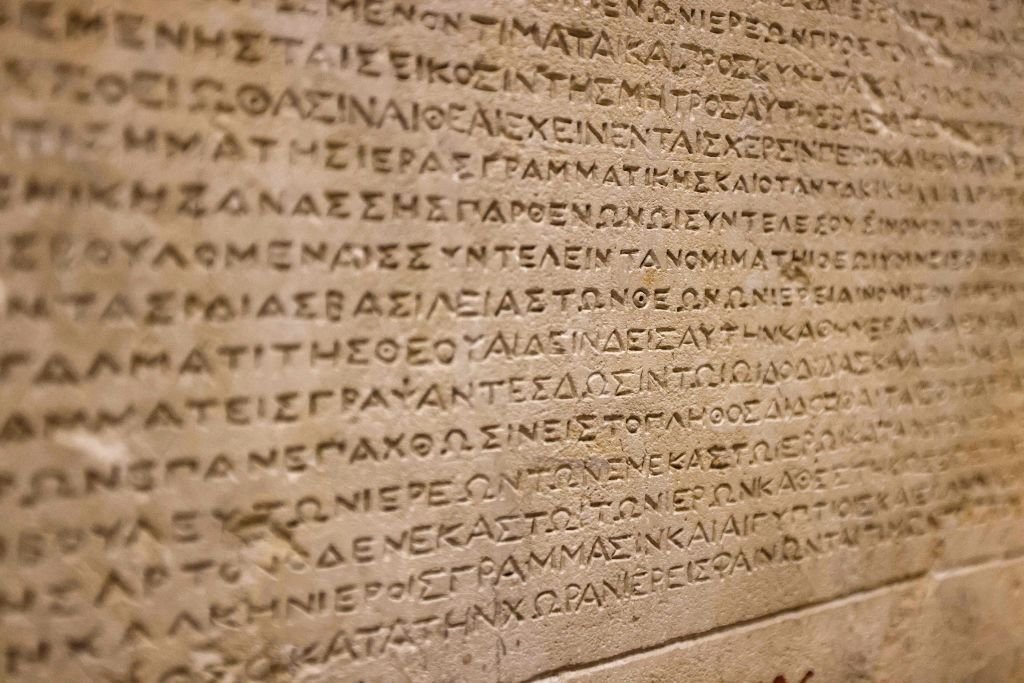Egyptian inscription may contain oldest non-biblical reference to Moses
Niwa Limbu• August 7, 2025
A 3,800-year-old inscription from an Egyptian mine has prompted claims after a recent re-evaluative study that it could contain the earliest known reference to Moses outside of the Bible.
The inscription was originally discovered in the early 1900s by the renowned archaeologist Sir William Flinders Petrie at Serabitel-Khadim, a turquoise mine in Egypt’s Sinai Peninsula. It is written in Proto-Sinaitic, one of the earliest alphabetic scripts, used by Semitic-speaking labourers during the reign of Pharaoh Amenemhat III (circa 1800 BC).
Independent researcher Michael S. Bar-Ron has re-examined the inscription using high-resolution imagery and 3D scans provided by Harvard’s Semitic Museum. After nearly a decade of study, Bar-Ron has proposed that the inscription includes two direct references to Moses of the Bible, which appear in the phrases:
zotmi’ Moshe – “This is from Moses”
ne’um Moshe – “A saying of Moses”
Bar-Ron presented his findings as part of an early-stage thesis, arguing that the inscriptions may reflect the writings of a single Semitic-speaking scribe, deeply familiar with Egyptian hieroglyphs but working with an emerging alphabet. He argues that the inscriptions carry personal, poetic and religious significance.
“These are not merely workers’ graffiti,” Bar-Ron told scholars in a preliminary presentation. “They reflect intention, belief and possibly even a theological dispute within a Semitic-speaking community present in ancient Egypt.”
If verified, the inscriptions would constitute the oldest known extra-biblical reference to Moses, predating the earliest known Hebrew references by centuries.
Bar-Ron’s theory has sparked renewed interest in the intersection between biblical tradition and archaeology, though his thesis remains controversial, and academic caution about his argument remains strong.
Dr Thomas Schneider, Egyptologist and professor at the University of British Columbia, said the new claims are unproven and "misleading", reports the Daily Mail, and he warns that "arbitrary" identifications of letters can distort history.
However, Bar-Ron's academic advisor, Dr Pieter van der Veen, is reported to have concurred with the re-evaluation, stating, "You're absolutely correct, I read this as well, it is not imagined!"
The Daily Mail notes that Bar-Ron's study, which re-examined 22 complex inscriptions from the ancient turquoise mines, has not yet been published in a peer-reviewed journal.
The inscriptions occur alongside invocations to El, the ancient Semitic name for God that is found in the Bible, as well as references to Baʿalat, the Semitic counterpart of the Egyptian goddess Hathor. Some of the inscriptions about Baʿalat appear to have been deliberately defaced, possibly by followers of El, suggesting a religious conflict.
Other inscriptions near a burnt-out temple on the site contain words such as “overseers”,“slavery” and a phrase that some have read as ni’mosh – possibly meaning “let us depart”. While speculative, Bar-Ron and others see a potential thematic link to the Exodus narrative.
The Church has not officially commented on the findings, but the suggestion of archaeological evidence that may connect directly to Moses’s presence in Egypt will be welcomed by many believers as an invitation to deeper study and contemplation of Scripture’s historical roots.
Photo: Inscriptions on one of the steles bearing a copy of the 'Canopus Decree', displaying the Greek portion of its triliteral bilingual text, discovered in 1881 by Gaston Maspero at the site of Kom el-Hisn in Egypt's Nile delta and currently on display at the Egyptian Museum, Cairo, Egypt, 27 September 2022. (Photo by KHALED DESOUKI/AFP via Getty Images.)

